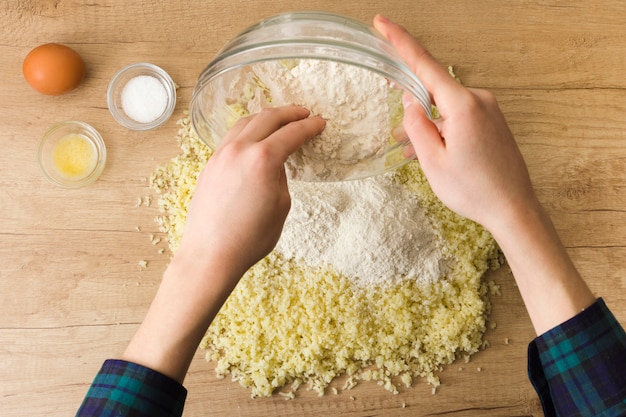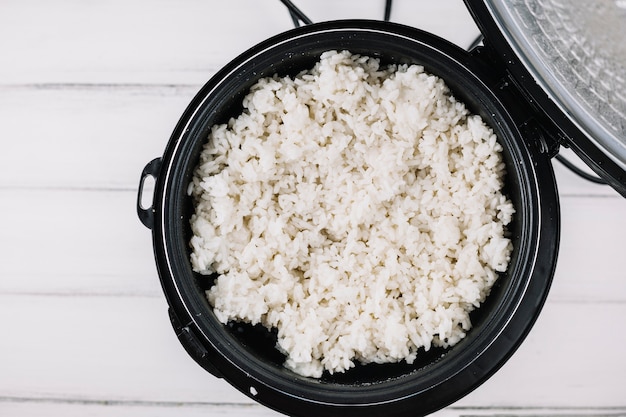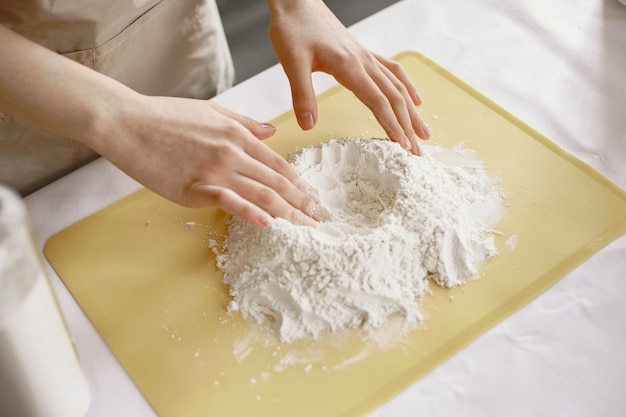Rice. It's the cornerstone of countless meals, the comforting base for countless flavours. But let's face it, cooking rice can be a bit of a culinary enigma. One minute you're staring at a fluffy, perfectly cooked masterpiece, the next you're wrestling with a gummy, undercooked mess. It's enough to make even the most seasoned cook question their abilities. But fear not, my friends, because I'm here to demystify the art of rice cooking and share the secrets to achieving that elusive perfect rice every single time.
Over the years, I've experimented with countless recipes, tips, and tricks, and I've come to realize that mastering rice is more than just following a set of instructions. It's about understanding the different types of rice, the delicate balance of water ratios, and, yes, the crucial element of cooking time. So grab a cuppa, settle in, and join me on a journey into the world of perfect rice.
(Part 1) The World of Rice - A Journey Through Varieties

First things first, let's get acquainted with the stars of the show: the diverse world of rice varieties. Each type has its unique characteristics, from its grain shape and texture to its subtle nuances of flavour. Understanding these differences will help you choose the perfect rice for your dish and ensure it cooks up to its full potential.
1. white rice - The Versatile Classic
White rice is the culinary chameleon, the one you can always rely on. It's readily available, affordable, and cooks up quickly, making it the go-to choice for countless dishes. White rice has been polished, removing the bran and germ, which gives it a longer shelf life and a mild, less nutty flavour. It's the perfect blank canvas for stir-fries, rice bowls, and even those comforting desserts like rice pudding.
2. brown rice - The nutritional powerhouse
Now, brown rice is the whole-grain champion, offering a wealth of nutrients and a delightful nutty flavour. Its bran and germ remain intact, giving it a slightly chewy texture and a more pronounced taste compared to white rice. While it takes a little longer to cook, it's well worth the extra effort for its nutritional punch and satisfyingly earthy flavour. Brown rice is perfect for hearty curries, salads, and pilafs.
3. basmati rice - The Aromatic King
Basmati rice is the star of Indian and Pakistani cuisine, boasting long, slender grains and a captivating aroma. It cooks up fluffy and separate, making it ideal for dishes where you want a distinct flavour and a non-sticky texture. Imagine the delicate fragrance of basmati filling your kitchen as it cooks, a tantalizing preview of the delicious meal to come.
4. jasmine rice - The Fragrant Jewel of Southeast Asia
Jasmine rice, with its subtle floral aroma, is a staple in many Southeast Asian dishes. It cooks up soft and sticky, making it perfect for sushi, rice paper rolls, and sticky rice desserts. Just imagine the delicate fragrance of jasmine wafting through the air as you prepare your favourite Thai or Vietnamese dish.
5. arborio rice - The Creamy Star of Risotto
Arborio rice is the ultimate champion of risotto, a creamy, decadent Italian rice dish. Its high starch content is the key to its magic, as it absorbs liquid and transforms into a luscious, creamy texture during cooking. Arborio rice is a bit chewier than other types and has a slightly nutty flavour, which adds a delightful complexity to any risotto.
(Part 2) The Water Ratio - Finding the Perfect Balance

Now that we've met the different rice varieties, let's talk about the crucial element that dictates the success of your rice: the water ratio. It's the invisible force that shapes the texture of your rice, turning a dry, crumbly mess into a fluffy, perfectly cooked masterpiece. The general rule of thumb is a 1:2 ratio (one cup of rice to two cups of water), but remember, this is just a starting point. Each type of rice has its own preferences, so a little adjustment might be needed to achieve perfect results.
1. Tailoring the Water Ratio to Each Rice Type
Here's a handy table to guide you:
| Type of Rice | Water Ratio (Rice: Water) |
|---|---|
| White Rice | 1:2 |
| Brown Rice | 1:3 |
| Basmati Rice | 1:1.5 |
| Jasmine Rice | 1:1.5 |
| Arborio Rice | 1:1 |
Remember, these are simply guidelines. Experiment with different ratios and observe the texture of your rice until you find the perfect balance for your taste. It's all about finding what works best for you.
(Part 3) Mastering the Art of Rice Cooking

Now that we've tackled the basics of rice varieties and water ratios, it's time to dive into the actual cooking process. There are two main methods at your disposal: the classic stovetop method and the convenient rice cooker approach. Each has its own advantages and disadvantages, so choose the one that best suits your kitchen arsenal and your personal preferences.
1. Stovetop Cooking - A Classic Approach
Stovetop cooking is the traditional method, offering maximum control over the cooking process. It's a rewarding experience for those who enjoy the hands-on approach and the subtle art of adjusting the heat and timing. Here's a step-by-step guide to achieving stovetop perfection:
- Rinse the rice thoroughly: Give your rice a good rinse under cold water until the water runs clear. This removes excess starch, which can contribute to a sticky, clumpy texture. Think of it as giving your rice a refreshing shower before its culinary transformation.
- Combine rice and water: Once your rice is rinsed, combine it with the appropriate amount of water in a saucepan. Make sure the water level is slightly above the rice, leaving a little room for the steam to circulate.
- Bring to a boil: Turn the heat to high and bring the rice and water mixture to a rolling boil. This initial burst of heat helps to activate the starch in the rice, ensuring it cooks evenly and achieves that beautiful fluffy texture.
- Reduce heat and simmer: Once the mixture is boiling, reduce the heat to a gentle simmer, cover the pan tightly, and let it simmer for the recommended time, depending on the type of rice you're using.
- Rest and steam: After the cooking time, turn off the heat and let the rice rest covered for 5-10 minutes. This allows the rice to steam gently and absorb any remaining liquid, resulting in a perfectly cooked, fluffy masterpiece.
- Fluff and serve: Once the resting time is over, fluff the rice with a fork to separate the grains and release any trapped steam. And voila, your perfectly cooked rice is ready to be enjoyed!
2. Rice Cooker - The Effortless Convenience
Rice cookers are the culinary superheroes of the kitchen, taking the guesswork out of rice cooking. They're the perfect companions for busy cooks who appreciate effortless convenience and consistently perfect results. Simply measure out the rice and water, press a button, and let the rice cooker do its magic. Most rice cookers even have a "keep warm" function, ensuring your rice stays warm and fluffy until you're ready to serve.
However, the beauty of rice cookers lies in their simplicity. They work on the principle of steaming, which ensures even cooking and minimizes the risk of overcooking or burning the rice. And the best part? You can relax and forget about your rice until it's ready, leaving you free to focus on other tasks or simply enjoy a well-deserved break.
(Part 4) Cooking Time - The Key to Rice Perfection
We've reached the heart of the matter: the crucial element that dictates the texture of your rice, the elusive perfect cooking time. Getting this right is the difference between a dreamy, fluffy dream and a disappointing, undercooked or overcooked reality.
Remember, each type of rice has its own personality, its own cooking preferences. So, while there are general guidelines, it's always best to consult the packet instructions for the specific brand you're using. These guidelines will offer the most accurate cooking times for optimal results.
1. White Rice - The Quick and Easy
White rice, with its polished simplicity, cooks up in a flash. On the stovetop, it usually takes around 15-20 minutes. In a rice cooker, it might take a little longer, around 20-25 minutes. But again, those packet instructions are your best friends for getting the exact time needed for the specific type of white rice you're using.
2. Brown Rice - The Patience is Key
Brown rice, with its whole-grain goodness, requires a little more patience. On the stovetop, it typically takes around 40-50 minutes. In a rice cooker, it might take around 45-60 minutes. But remember, those packet instructions are there for a reason! They'll guide you to the perfect cooking time for your specific brand of brown rice.
3. Basmati Rice - The Speedy Star
Basmati rice, with its long, slender grains, is a whiz in the kitchen. It cooks up quickly on the stovetop, usually taking around 10-15 minutes. In a rice cooker, it might take around 15-20 minutes. And yes, those packet instructions are your trusted companions for the perfect cooking time for your particular basmati rice.
4. Jasmine Rice - The Quick and Aromatic
Jasmine rice, with its delicate floral fragrance, is a quick cook, similar to basmati. It typically takes around 12-18 minutes on the stovetop. In a rice cooker, it might take around 15-20 minutes. But don't forget, those packet instructions are your guides to achieving the perfect cooking time for your specific brand of jasmine rice.
5. Arborio Rice - The Creamy Risotto Star
Arborio rice is a little different from other types. It's not boiled but simmered in broth for about 18-20 minutes, stirring frequently to release its starch. This constant stirring is what creates the creamy texture characteristic of risotto. Think of it as a dance between rice and broth, a slow, gentle transformation into a velvety, luxurious dish.
(Part 5) The "Spoon Test" - Your Culinary Secret Weapon
So, how do you know when your rice is cooked to perfection? Enter the "spoon test," your secret weapon in the quest for perfect rice. About 5 minutes before the estimated cooking time, grab a spoon and scoop a bit of rice. If the rice is cooked through and the water is absorbed, it's ready! If it's still a bit firm, give it a few more minutes. You can also gently push the rice with the spoon. If it gives way easily, it's reached its peak of fluffy perfection.
The "spoon test" is your guide, your culinary compass, leading you to that magical point where the rice has absorbed all the liquid and reached its optimal texture. It's a simple yet effective technique that ensures you never overcook or undercook your rice again.
(Part 6) Elevating Your Rice Game - Beyond the Basics
You've mastered the basics of rice cooking, but there's always room for enhancement, for adding those subtle touches that transform a simple dish into a culinary masterpiece. It's about incorporating those small details, those secret ingredients that elevate your rice game to the next level.
1. Salt - The Unsung Hero
Don't underestimate the power of salt! A pinch of salt added during cooking enhances the natural flavour of the rice, bringing out its subtle sweetness and creating a more balanced, delicious experience. It's a simple step, but it makes a world of difference.
2. Experiment with Flavours - Unleash Your Culinary Creativity
Don't be afraid to venture beyond the ordinary. Add a bay leaf, a sprig of rosemary, or even a few garlic cloves to your rice while it's cooking for a subtle, flavourful boost. For a more intense flavour profile, try sautéing onions, garlic, or ginger before adding the rice and water. It's a simple twist that adds a depth of flavour to your rice dishes.
3. Presentation Matters - A Culinary Touch of Elegance
Even the simplest dishes deserve a touch of elegance, a little visual appeal. A sprinkle of chopped parsley, a drizzle of olive oil, or a squeeze of lemon juice can elevate the look of your rice dish and make it more inviting. It's about presenting your creation with pride, adding those finishing touches that elevate the dining experience.
(Part 7) The Perfect Rice Companions - Finding the Ideal Pairings
You've got your perfectly cooked rice, a culinary triumph in its own right, but what to serve it with? That's where the adventure truly begins, where you explore the world of flavour combinations and discover the perfect pairings for your rice masterpiece.
1. Classic Combinations - A Symphony of Flavours
For a classic combo, you can't go wrong with stir-fries, curries, and stews. White rice is the ideal complement to these hearty dishes, providing a fluffy base for the vibrant flavours to shine through.
2. Light and Refreshing Options - A Culinary Escape
If you're craving a lighter, more refreshing experience, try serving your rice with salads, grilled fish, or roasted vegetables. Jasmine or basmati rice works beautifully with these dishes, adding a touch of lightness and fragrance to the overall experience.
3. Sweet Delights - The Ultimate Culinary Comfort
Don't forget about those sweet treats! Rice pudding is a classic dessert that's both comforting and delicious. For a more adventurous twist, try rice-based desserts like mochi or rice cakes. It's a reminder that rice can be a versatile ingredient, capable of satisfying both savoury and sweet cravings.
(Part 8) From Frustration to Fluff - Embracing the Journey
It's been a long journey, but now you're equipped with the knowledge and confidence to conquer the world of rice cooking. From understanding the nuances of different rice varieties to mastering the art of water ratios and cooking times, you've gained the tools to create perfect rice, time and time again.
Remember, every cook has their own style, their own preferences. Don't be afraid to experiment, to tweak the recipes, and to find what works best for you. Embrace the joy of culinary discovery, the satisfaction of creating a dish that's not just delicious but also uniquely yours. Now, go forth and cook some amazing rice!
FAQs
1. Can I use tap water to cook rice?
While tap water might seem like the obvious choice, it's best to use filtered or bottled water to cook rice. Tap water can sometimes contain impurities, such as chlorine or minerals, that can affect the taste and texture of your rice. If you're using tap water, make sure it's fresh and not overly hard.
2. Can I reuse cooked rice?
Absolutely! Reusing cooked rice is a great way to save time and reduce food waste. Just make sure the rice is completely cooled down before storing it in an airtight container in the fridge. It will stay fresh for 3-4 days. To reheat, you can microwave it or stir-fry it in a pan.
3. Can I add ingredients to the rice while cooking?
Absolutely! Adding aromatics like onions, garlic, or ginger to the rice while it's cooking can infuse it with flavour and add depth to your dishes. Just make sure to sauté them before adding the rice and water. You can also add herbs, spices, or even vegetables to your rice while it's cooking. Just be mindful of the cooking time, as different ingredients may take longer to cook.
4. What if my rice is too sticky?
If your rice is too sticky, it's likely because you used too much water or didn't rinse the rice thoroughly enough. To fix this, you can try fluffing the rice with a fork and letting it air dry for a few minutes. You can also try adding a bit more rice to the pot and stirring it well.
5. What if my rice is too dry?
If your rice is too dry, it's likely that you didn't use enough water or cooked it for too long. You can try adding a little bit of water to the pot and simmering it for a few more minutes. You can also try adding a bit of milk or cream to the rice and stirring it well.
Everyone is watching

Corn on the Cob: The Ultimate Guide to Perfectly Cooked Ears
Healthy MealsAh, corn on the cob. Just the name evokes images of sunny days, barbecues, and that sweet, juicy flavour that ...

Scallops: The Ultimate Guide to Perfect Cooking
Healthy MealsAh, scallops. Those delicate, sweet, and utterly delicious morsels of the sea. They hold a special place in my...

Spaghetti Squash: The Ultimate Guide to Cooking and Serving
Healthy MealsRemember that time you saw spaghetti squash at the supermarket, looking all bumpy and strange, and thought, "W...

Salmon Cooking Times: Perfect Guide for Every Recipe
Healthy MealsLet me tell you, cooking salmon is an art form. It's all about getting that perfect balance: juicy and tender,...

Ham Cooking Time: How Long to Bake, Smoke, or Boil a Delicious Ham
Healthy MealsAh, ham. It's a classic, isn't it? A real crowd-pleaser, especially around holidays. And when done right, it'...
